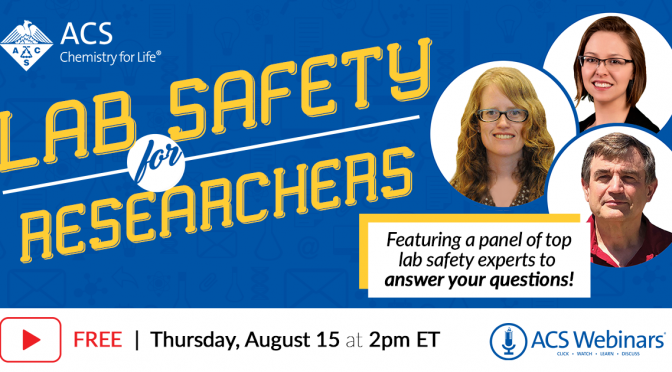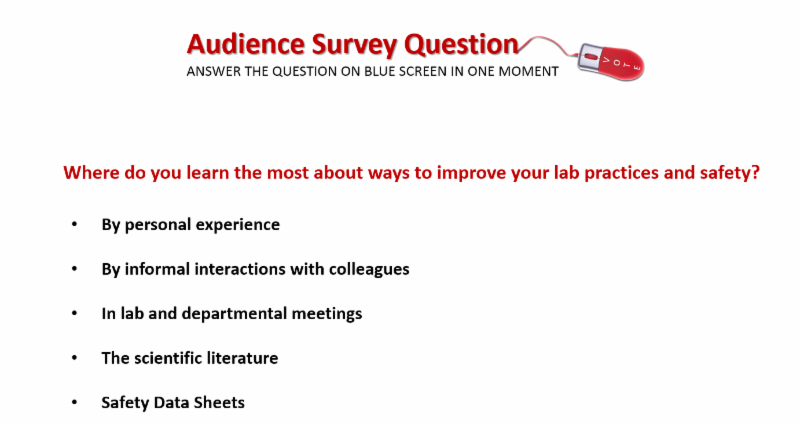On May 12, 2022, three chemists who have found careers in environmental health and safety work discussed how they found their way into this field, the opportunities and challenges they have found in making the transition from the laboratory to the safety profession, and provided advice for other chemists considering this career transition.
The presentation file they shared is available below and the recording of the webinar is available at the ACS Webinars web site. The webinar included active audience participation, with several members of the audience sharing their own interests and experiences in the field.
In addition to questions and answers from the audience, the webinar included 4 poll questions about their experience working with EHS professionals in their lab. Their responses are outlined in the figures below.
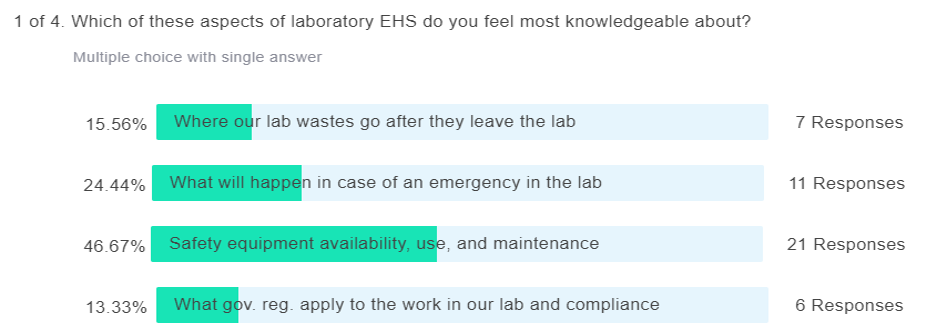


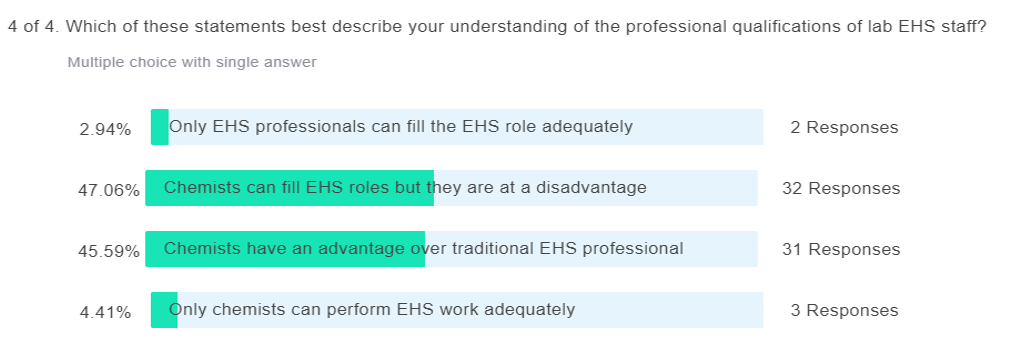
Resources mentioned in the webinar:
- Free ACS on line course Foundations of Chemical Safety and Risk Management: https://institute.acs.org/courses/foundations-chemical-safety.html
- CHAS Peer Led Workshop: Empowering Academic Researchers To Strengthen Safety Culture Workshop https://institute.acs.org/courses/foundations-chemical-safety.html
- CHAS Professional Development schedule workshops found at https://dchas.org/2022/05/11/workshops2022/
Audience Comments
- I work as a lab manager at a university that has an EHS department. I earned CHO certification purely for educational purposes. What type of position would I look for to actually use this certification and grow into a safety professional?
- I worked in chemistry scale up for 20 years before moving into Safety –
- Great to see the early career/late career questions being asked here – I think the presenters are saying this is an any time opportunity when it is right for you.
- If your employer doesn’t have an EHS department – do you see this as an opportunity or a problem?
- The engineering bias is there when things are written down in my experience too – I don’t think that is a blocker in practice.
- Is there an on line space where people looking to connect through the comments can do that?
- I would love to learn more about how to address a career in chem safety after being a CHO for my school and district and find a new position after retirement from teaching Chemistry for 30 years.
- In past I have taken quite a few courses offered by Ken Roy ( NSTA consultant in Safety) while a teacher in CT and have helped to write my chemical Hygiene plan for our school and district and to introduce a Chemical Hygiene officer position. I believe our school and district has become safer as a result of the work.
- I need to know how to gain certifications that can now support my skills and bring credibility to applying to positions in academic and or industry.
- Need to know what certifications and courses to take? How to rewrite the resume to best apply for positions? Maybe someone might be willing here to share and to give me some help as a mentor to transition?
- What kinds of opportunities exist for people freshly done with their undergraduate degree in the area ESH&Q opportunities, or is a Master’s/PhD required for these positions?
- I work at a small, private liberal arts school that doesn’t have a EHS department. :/
- I have 20 years industry experience as a formulator. I’m inspired that it’s not to late to switch to a safety career but concerned that my resume will be overlooked as either over or under qualified in that field, or both. What training might be available for such a transition without getting in over my head?
- When I look at EHS positions, there appear to be far more looking for an engineering background than a chemistry background. Any tips for how to frame transferable skills for people who are in an engineering mindset?
- What was that free course mentioned?
- Perhaps someone can address an “encore” career transition after retiring from a technical career.
- As a chemistry professor at a community college who also does not have an EHS department, I’ve found myself in the roll of needing to educate myself on the EHS concerns. What additional resources would be useful for those of us that need to help build institutional EHS departments?
- At what point should an R&D organization have a dedicated “full-time” Chemical Hygiene Officer? Our site’s current CHO performs their EH&S duties in addition to their full-time R&D position.
- Is there any great way of avoiding a near miss as far as Lab safety is concerned
- And is a lab safety exam necessarily needed in academic Institutions for students doing a major that involves a wet lab environment
- I have a bachelor’s in Chemistry and an MBA with a concentration in project management. I used to work in the raw-material lab for AkzoNobel in Brazil. I was responsible to generate security codes for handling raw materials in the manufacturing . Once I moved to the US, I had to change careers, but I am interested to go back into the scientific world and perhaps safety.
- How can we start a joint training joint program funded by ACS with the academia in Egypt and Middle East?
- Hi, Colin, safety professional in Pharma based in UK – great webinar so far – brilliant presentation from Whitney.
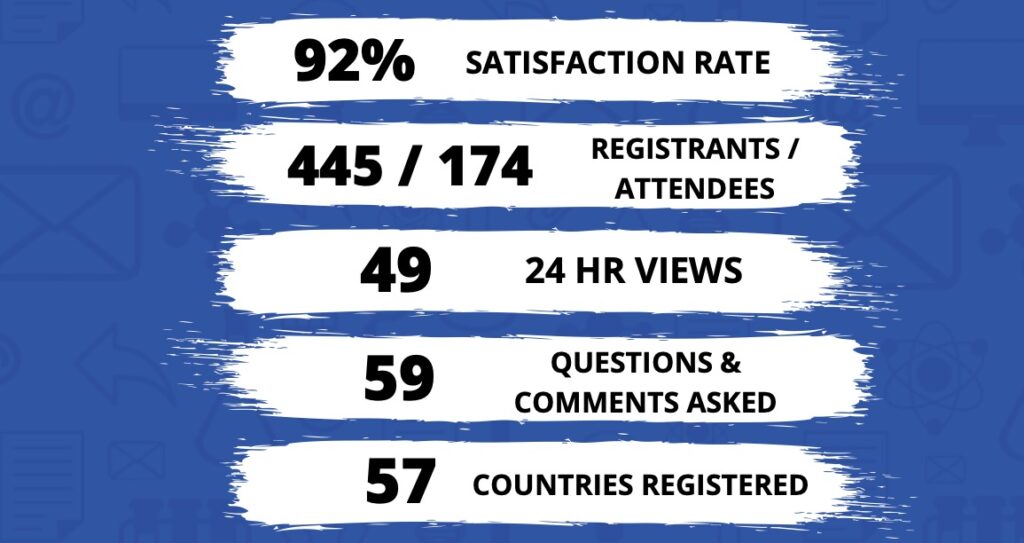
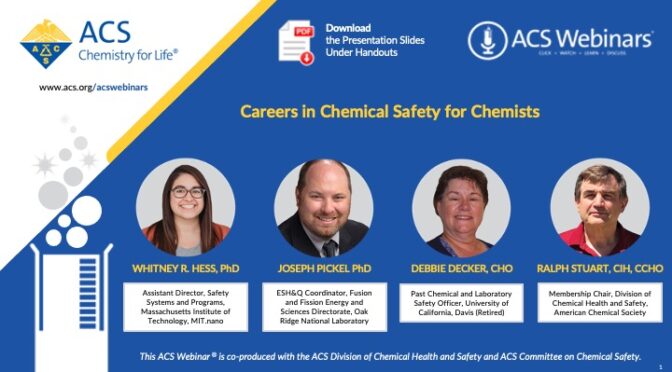

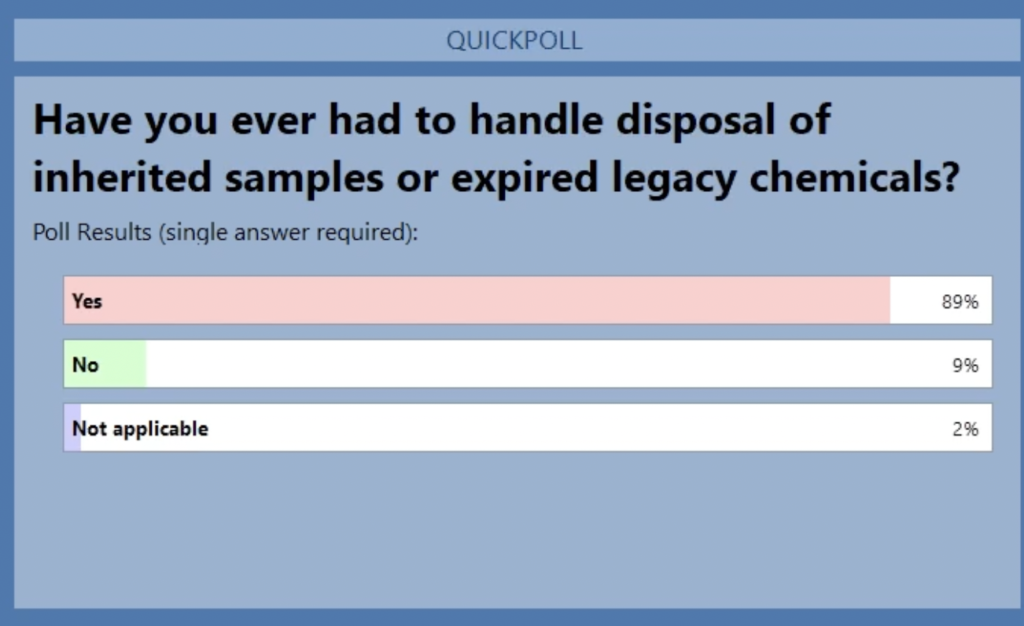
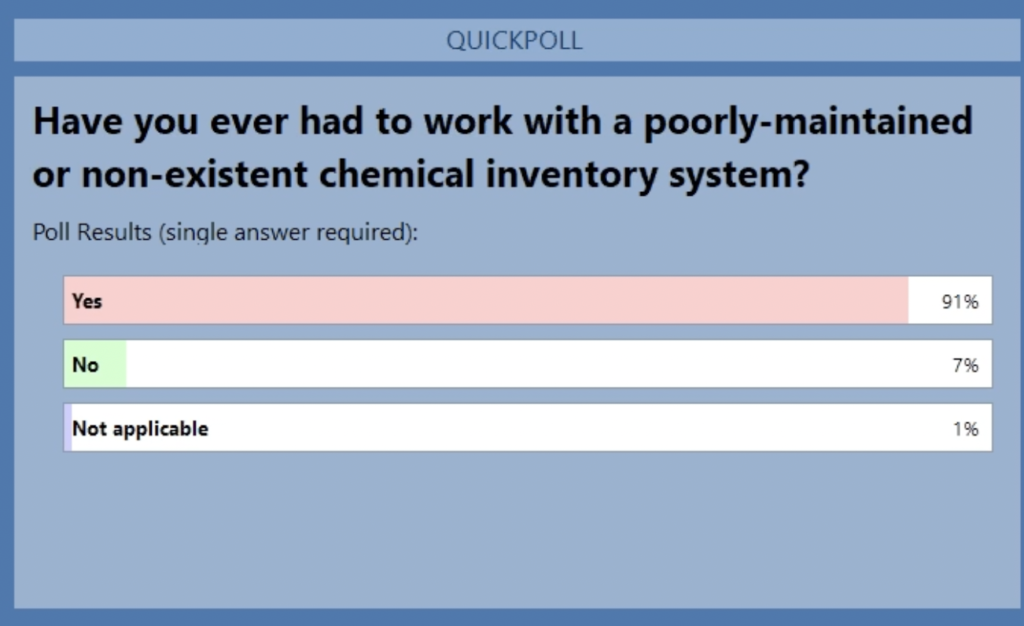
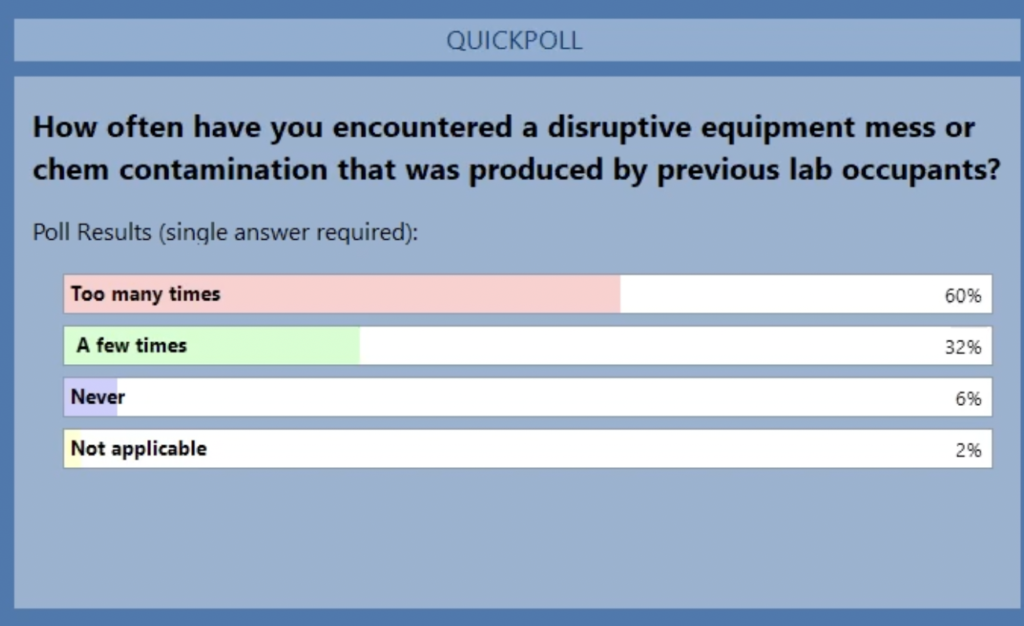
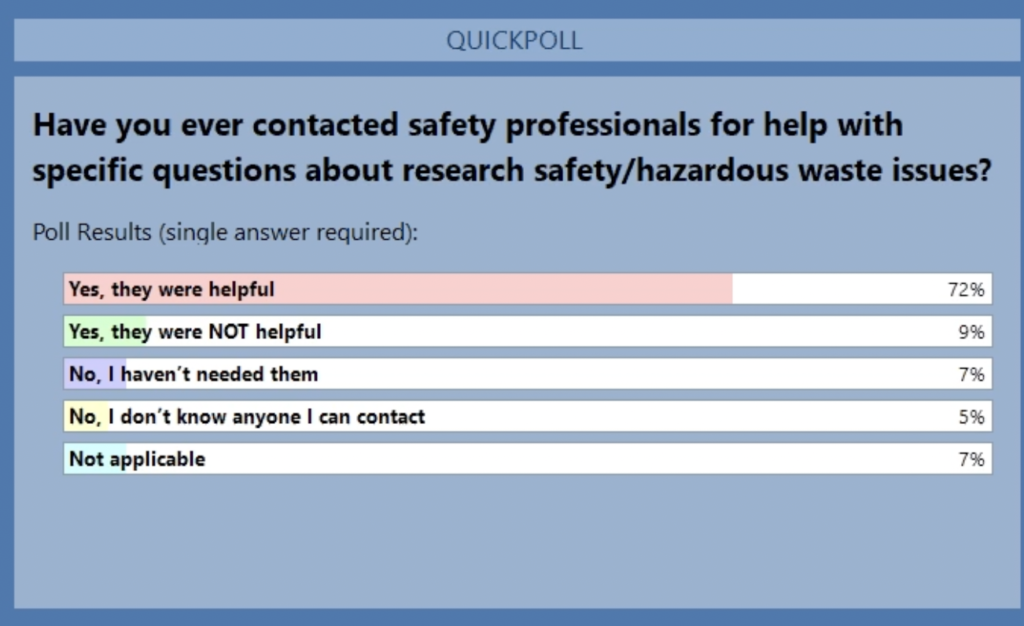
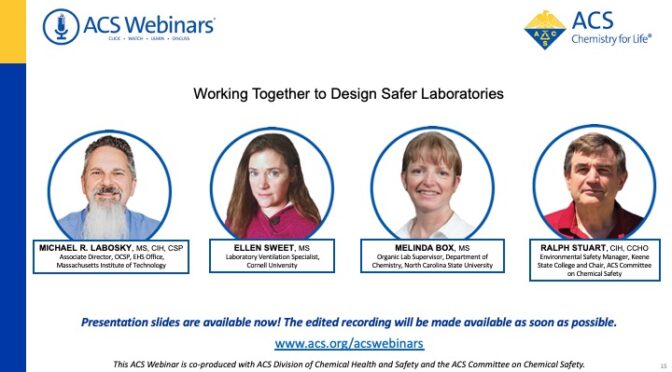


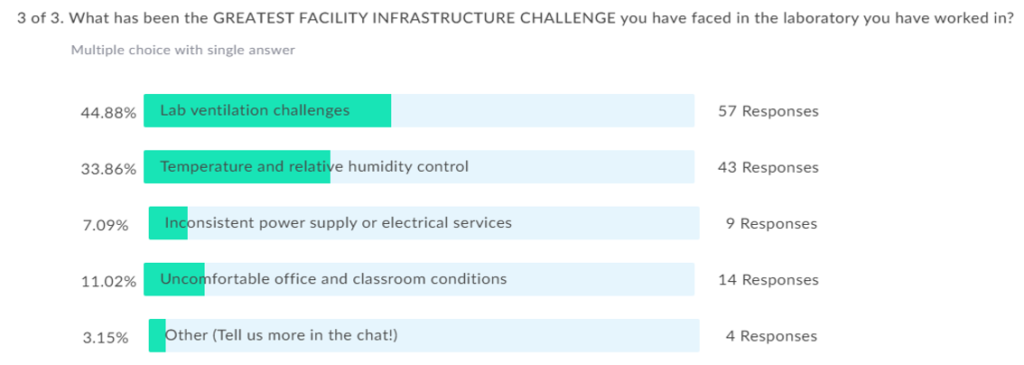
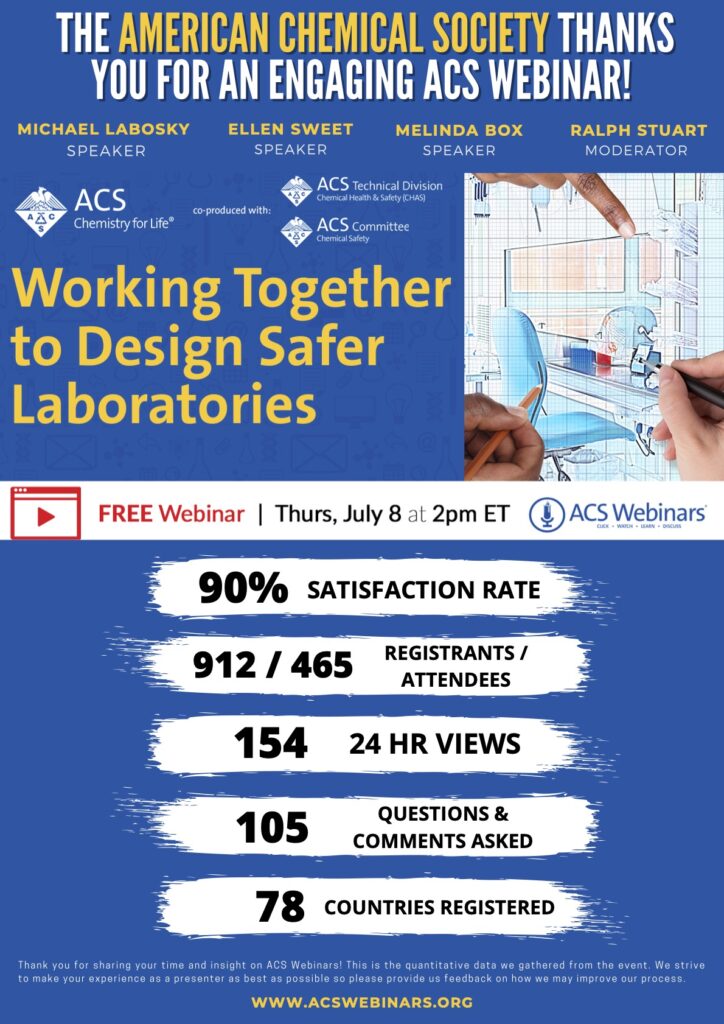
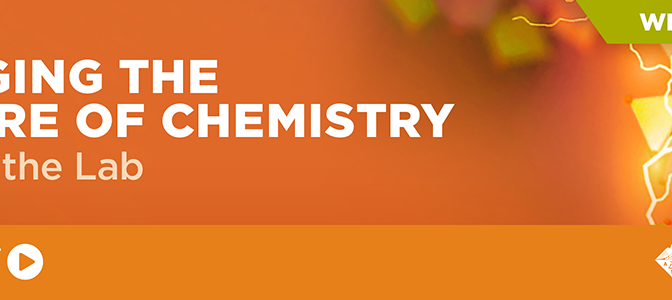
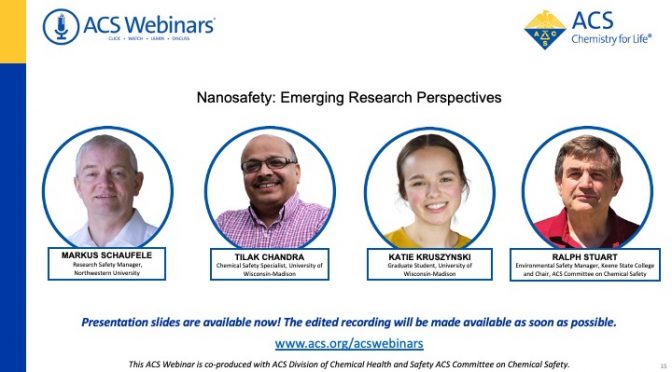








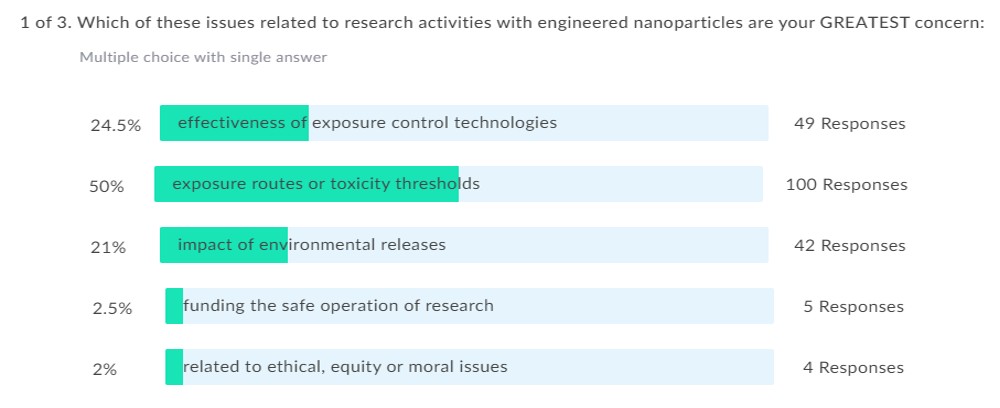

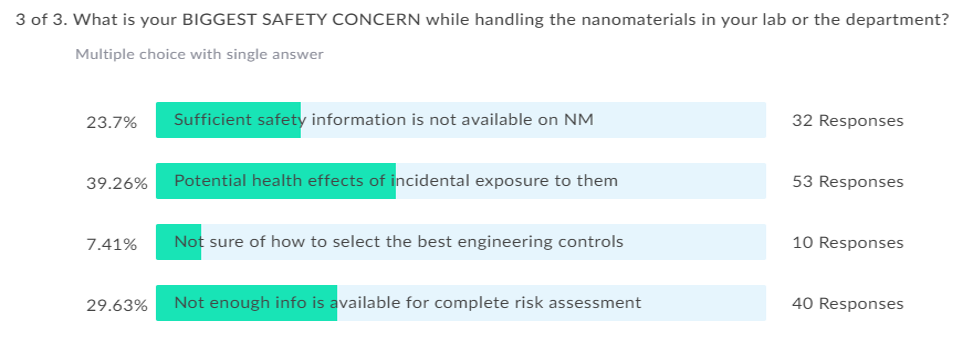

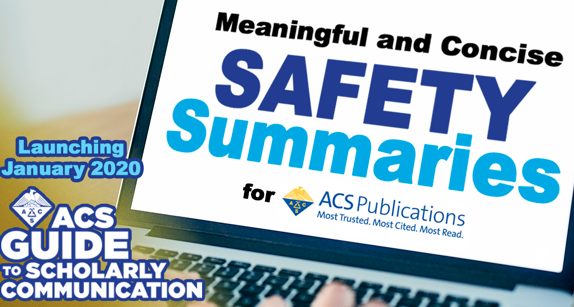


 Sara Tenney, ACS Publications
Sara Tenney, ACS Publications